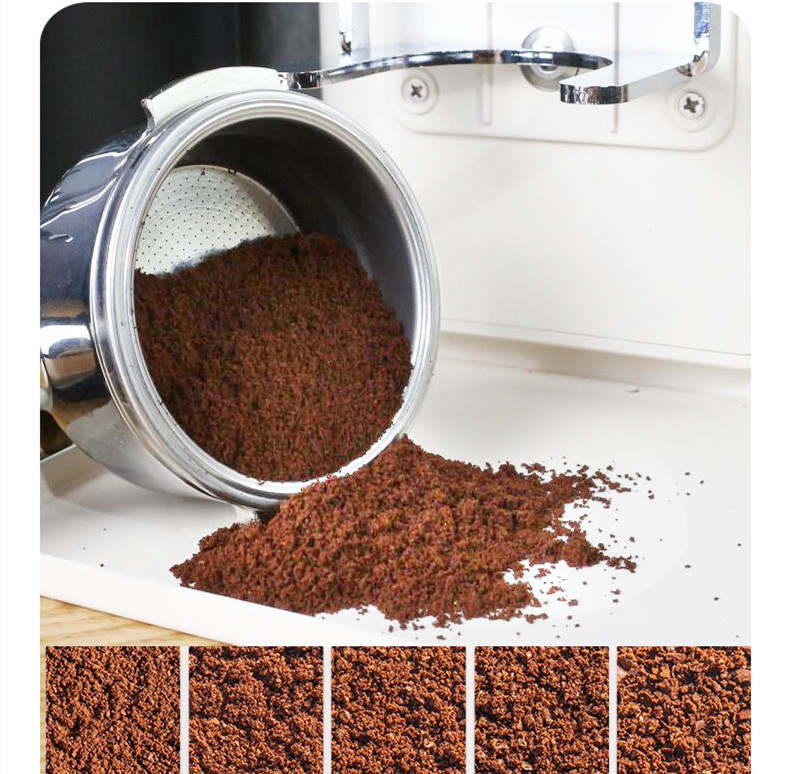How to Adjust Coffee Acidity Through Grinder Settings and Techniques
Understanding the Role of Grind Size in Acid Extraction
Acidity in coffee is primarily derived from organic acids like citric, malic, and tartaric acids, which dissolve faster than sugars and bitterness during brewing. Grind size directly controls how quickly water extracts these acids, making it a critical tool for balancing brightness and body.
- Finer Grinds Increase Surface Area: When coffee is ground finer, water contacts more ground particles, accelerating the extraction of acidic compounds. This is ideal for light roasts, which naturally retain higher acidity due to shorter roasting times. For example, a fine grind (similar to table salt) in espresso or AeroPress can emphasize citrusy or floral notes. However, over-fineness risks over-extraction, turning bright acidity into harsh sourness.
- Coarser Grinds Slow Extraction: A coarser grind (like sea salt) reduces surface area, allowing water to extract acids more gradually. This suits medium or dark roasts, where excessive acidity might clash with caramelized or chocolatey flavors. In French press brewing, a coarse grind mellows acidity while highlighting sweetness and body.
Experiment by adjusting grind size in 0.5-notch increments (on a stepped grinder) or small turns (on a manual grinder) and taste-testing the results. Note how acidity shifts from vibrant to muted as the grind becomes coarser.
Tailoring Grind Consistency to Highlight or Soften Acidity
Inconsistent grind particles create uneven extraction, where some grounds over-extract (releasing bitter compounds) while others under-extract (leaving sour acids behind). This muddles acidity, making it taste unbalanced or chaotic.
- Burr Grinders for Uniformity: Unlike blade grinders, which chop beans randomly, burr grinders crush beans between two surfaces, producing consistent particle sizes. A uniform grind ensures acidic compounds extract evenly, whether you’re aiming for a crisp pour-over or a smooth cold brew. For example, a medium-fine grind with minimal fines (tiny particles) in a V60 pour-over will yield a clean, acidic cup without bitterness.
- Reducing Fines for Clarity: Fines (ultra-small particles) extract rapidly and can dominate acidity, making it taste sharp or astringent. To minimize fines, use a conical burr grinder (which typically produces fewer fines than flat burrs) or sift grounds through a fine mesh sieve. Re-grind larger particles or discard excess fines, depending on your preference for acidity intensity.
If acidity feels one-dimensional, check for grind inconsistency. A bimodal grind (mix of coarse and fine particles) often creates a “hollow” acidity that lacks complexity.
Adjusting Grind Settings Based on Roast Level and Bean Origin
Acidity varies significantly depending on the coffee’s origin and roast profile. Grind adjustments must account for these factors to avoid masking or overemphasizing natural acidity.
- Light Roasts: Beans from high-altitude regions (e.g., Ethiopian Yirgacheffe) often have high acidity and floral aromas. A fine grind is essential to extract these delicate flavors without under-extraction, which would make the coffee taste weak or grassy. If the acidity is too intense, try a medium-fine grind to balance it with sweetness.
- Medium Roasts: These beans strike a balance between acidity and body. A medium grind (like sand) works well for drip coffee or pour-over, allowing acids to shine without overwhelming the cup. For example, a Central American medium roast might benefit from a slightly finer grind to highlight its bright citrus notes.
- Dark Roasts: Dark roasts (e.g., Sumatran or French roasts) have lower acidity due to prolonged roasting, which breaks down organic acids. A coarse grind is ideal to prevent over-extraction, which would amplify bitterness and mute any remaining acidity. If you detect a flat taste, try a medium-coarse grind to coax out subtle caramel or nutty acidity.
Always adjust grind settings incrementally and take notes on how acidity evolves with each change. For instance, a Kenyan AA light roast might require a finer grind than a Colombian medium roast to achieve similar acidity levels.
Common Mistakes That Distort Coffee Acidity
Overheating Grounds During Grinding
Grinding beans at high speeds generates friction, heating the grounds and volatilizing acidic compounds like citric acid. This results in a flatter, less vibrant cup. To avoid this:
- Use a low-speed grinder or grind manually in short bursts.
- Let the grinder cool down for 1–2 minutes between batches if grinding large quantities.
Ignoring Water Temperature’s Impact on Acidity
Water temperature affects extraction rates and acid perception. Hotter water (195–205°F) extracts acids faster, while cooler water (175–185°F) slows extraction, mellowing acidity. Pair grind adjustments with water temperature:
- For a bright, acidic cup, use a finer grind with hotter water (e.g., pour-over at 200°F).
- For a smoother profile, use a coarser grind with cooler water (e.g., cold brew steeped at room temperature).
Neglecting Grinder Maintenance
Oil residue from dark roasts or old grounds stuck in the burrs can turn rancid, imparting off-flavors that mask acidity. Clean your grinder regularly by:
- Brushing out loose grounds after each use.
- Using a grinder cleaning tablet or uncooked rice (sparingly) to absorb oils (check manufacturer guidelines first).
- Disassembling removable parts for deep cleaning every 1–2 months to prevent buildup.
By mastering grind size, consistency, and adjustments for roast and origin, you can sculpt coffee acidity to suit your palate. Small, intentional changes to your grinding routine will transform acidic notes from overwhelming to harmonious, elevating your coffee’s complexity and balance.


